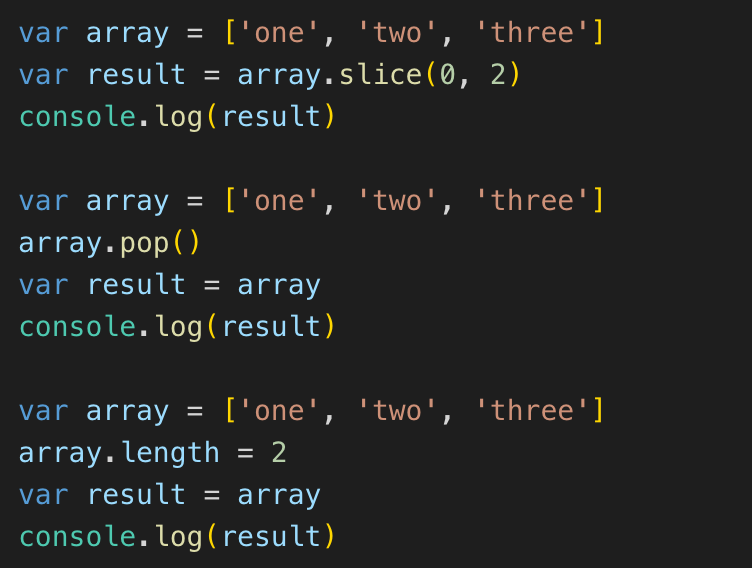

The elements to add to the array, beginning from start. 'b' So, in summary use delete on object literals. Finally, if you want to remove an element from an array. In this case, you should specify at least one new element (see below). The element index is preserved and the value is set to 'undefined' Conversely, performing a delete on an object literal removes the key/value from the object. If deleteCount is 0 or negative, no elements are removed. However, if you wish to pass any itemN parameter, you should pass Infinity as deleteCount to delete all elements after start, because an explicit undefined gets converted to 0. If you do not specify any items, the splice() method only removes the items from the array.

(Optional) The items to add from the start of the array. Understanding the Problem: We have one input, a string. The second array should remain the same after the function runs. The first array should remain the same after the function runs. If the value is set to 0 or negative, no items will be removed. All elements from the first array should be added to the second array in their original order. If deleteCount is omitted, or if its value is greater than or equal to the number of elements after the position specified by start, then all the elements from start to the end of the array will be deleted. (Optional) An integer value that indicates how many items to be removed from an array from start. This is different from passing undefined, which is converted to 0.Īn integer indicating the number of elements in the array to remove from start. If start is omitted (and splice() is called with no arguments), nothing is deleted.Negative index counts back from the end of the array - if start = array.length, no element will be deleted, but the method will behave as an adding function, adding as many elements as provided.Here is the syntax for it: splice (start) splice (start, deleteCount) splice (start, deleteCount, item1) splice (start, deleteCount, item1, item2, itemN) Let us. This method modifies the original array and returns the removed elements as a new array. What you are actually seeing, is the return value of splice method, which is an array containing the removed elements, which in both your method calls, are none. Zero-based index at which to start changing the array, converted to an integer. The splice () method is used to remove or replace existing elements in the array. All other answers correctly describe splice method and spread operator behavior, but none tries to correct your misunderstanding about the result. Object.prototype._lookupGetter_() Deprecated.Object.prototype._defineSetter_() Deprecated.let list 1,2,3,4,5 const removeElement list.indexOf (3) // remove number 3 var newList list.slice (0, removeElement).concat (list.slice (removeElement+1)) // 1,2,4,5 If you are prepared to use ES2015 syntax, you can use. Object.prototype._defineGetter_() Deprecated slice doesnt mutate the array on which it operates so you need to assign a value to what it returns.


 0 kommentar(er)
0 kommentar(er)
